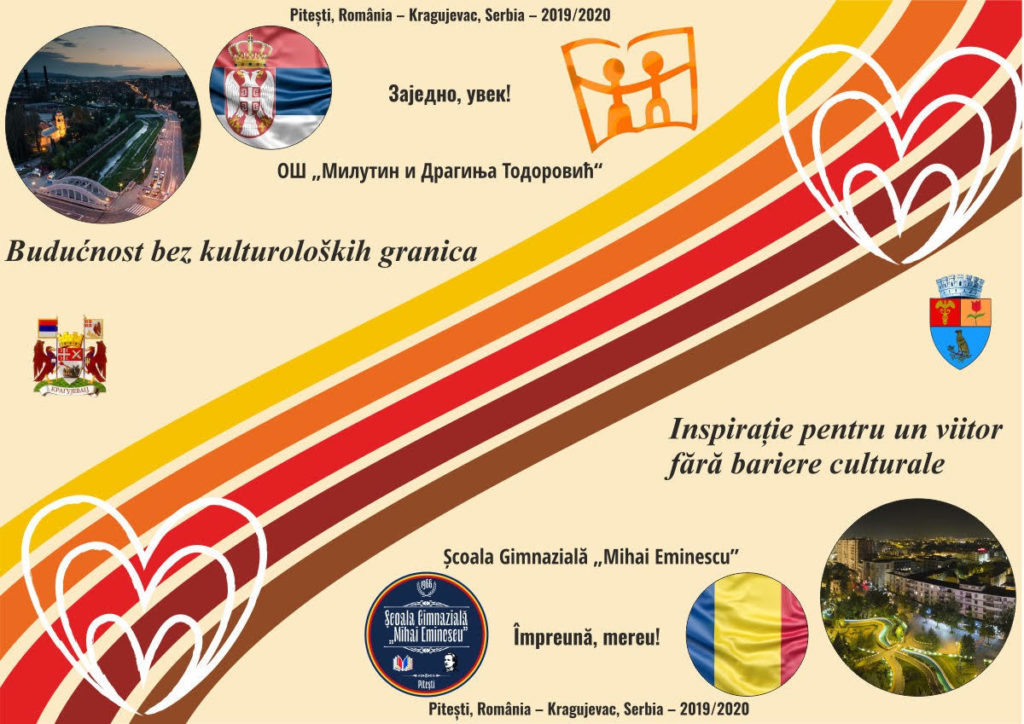
20 octombrie 2019, ora 7.30. În curtea Școlii Gimnaziale „Mihai Eminescu”, soarele unei veritabile dimineți de vară indiană dezmorțește proaspătul covor vegetal arămiu. E duminică și, în week-endurile de toamnă, o simfonie de culori de spectru autumnal acaparează peluza din fața școlii, în lipsa lui nea Ion, mânuitorul suflantei de frunze.
Liniștea matinală este tulburată, la început timid, apoi din ce în ce mai intens, de glasuri de copii și adulți, pe fundalul zgomotului sacadat al roților de troller. Dacă fiecare sentiment s-ar fi exteriorizat sub forma unei culori, la intrarea în curtea școlii ar fi apărut curcubeul ca după o ploaie sănătoasă de vară. Emoții, bucurie, agitație, curiozitate, nerăbdare, entuziasm, zâmbete se împletesc într-o gamă largă de nuanțe printre copii, părinți și profesori.
Este al 14-lea an la rând când 10 elevi ai școlii noastre pleacă pentru câteva zile să descopere tradițiile, cultura, gastronomia, educația, pasiunile, stilul de viață ale vecinilor noștri sârbi din orașul frate cu Piteștiul, Kragujevac. Și nu oricum, ci în cel mai autentic mod cu putință: în sânul familiilor a 10 copii de vârsta lor, elevi la „Școala Milutin I Draginja Todorovic”.
Ca să își ascundă neliniștea, părinții oferă ultimele sfaturi. Pentru că ne așteaptă un drum lung, ne îmbarcăm, nu înainte de a face o poză de grup cu „gașca”: Marius, Ianis, Patricia, Alexandru, Andrada, Alexandra, Alesio, Ernesto, Eduard, Raluca, profesorii Cristina Langa, Luiza Zamfira (învățământ primar), Roxana Petean (engleză), Mihai Burdușa (matematică) și, bineînțeles, directorul Școlii Mihai Eminescu, Marian Haiducu. Peste 4 ore, băteam deja la „Porțile de Fier” pentru a intra pe teritoriul Serbiei.
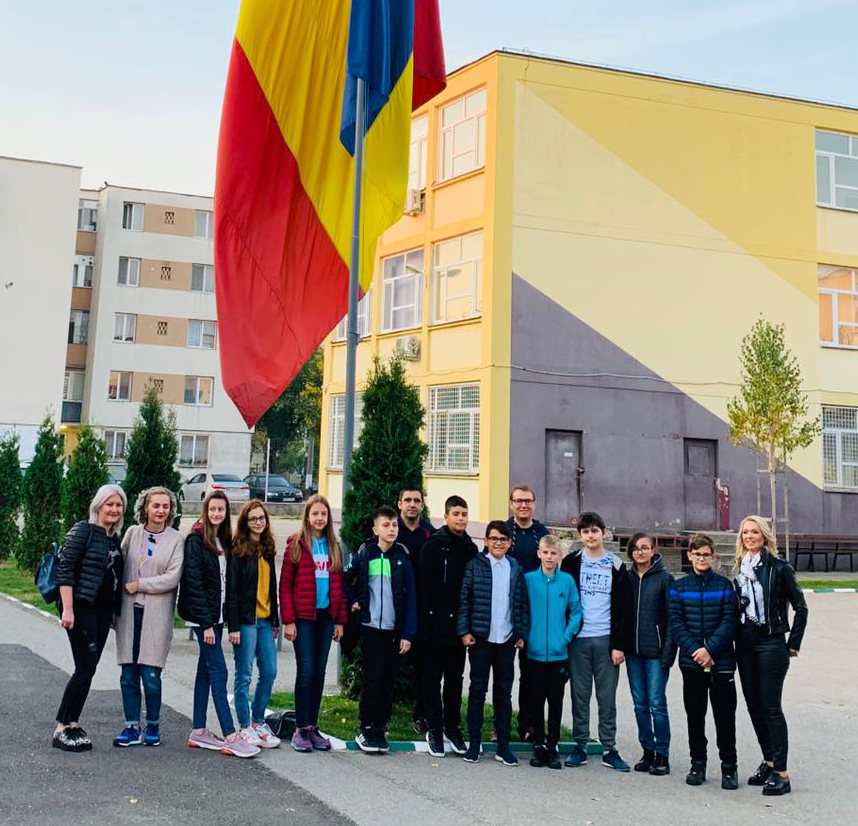
Drumul de-a lungul Dunării oferă piesaje de vis, mai ales într-o zi însorită. Telefoanele mobile se transformă imediat din console de jocuri în aparate de fotografiat. Oprim de câteva ori pentru a imortaliza, din puncte de belvedere, dansul fluviului printre pereții stâncoși ai Cazanelor.
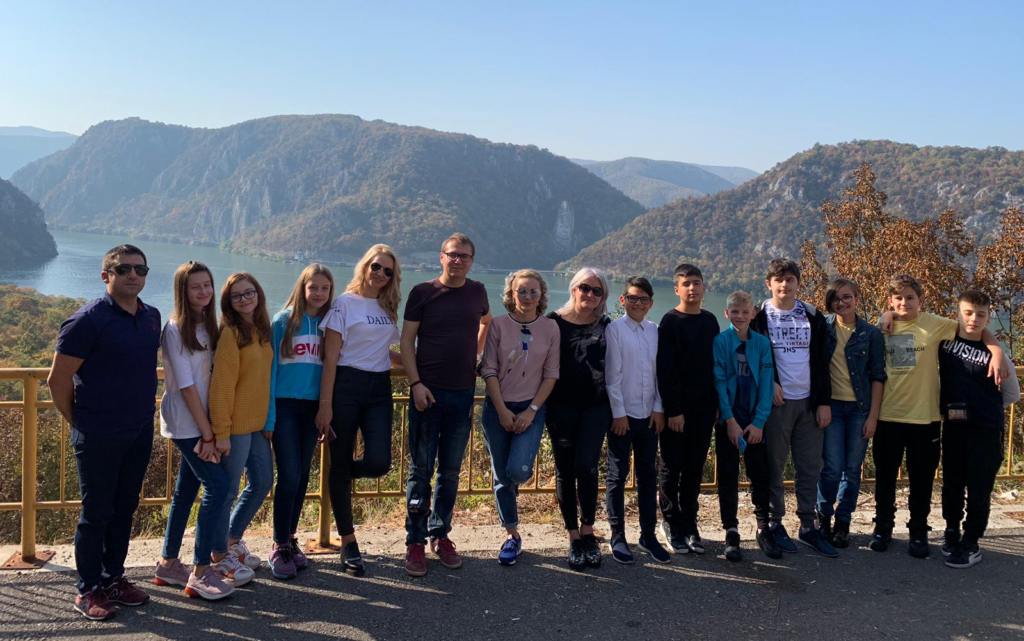
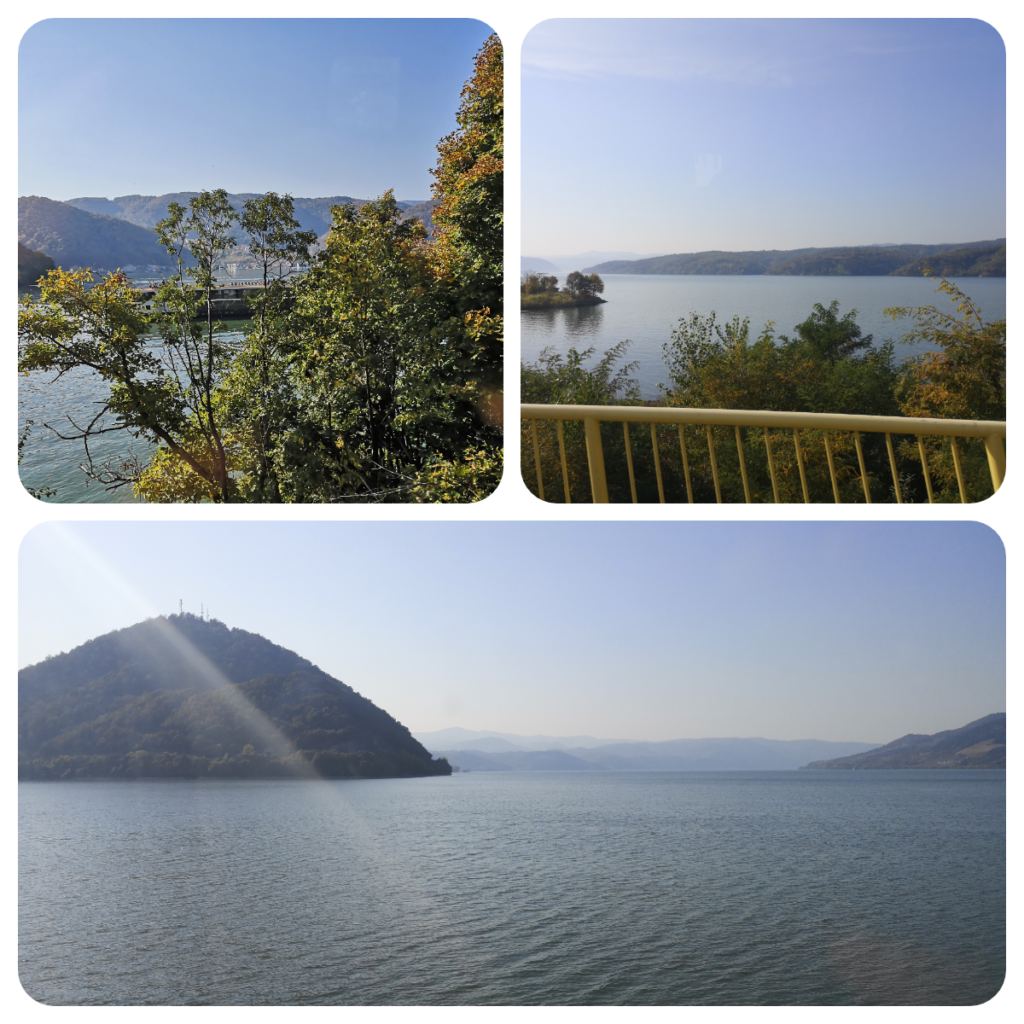
Spre seară, obosiți dar entuziaști, ajungem la Școala „Milutin I Draginja Todorovic”. Recunoscuți pentru ospitalitate (un atribut comun al celor două popoare), colegii sârbi nu ne înșeală așteptările. Se fac câteva formalități, iar elevii noștri își încep experiența sârbească într-o atmosferă destinsă, fiind preluați de familiile unde urmează să petreacă următoarele zile.
21 octombrie 1941 este una dintre cele mai negre zile din istoria Serbiei și a Kraguevac-ului în special. Pentru a descuraja complet mișcările de rezistență în timpul ocupației naziste, ca urmare a unei revolte recente, soldații germani aleg această dată pentru a comite un masacru de o cruzime de neimaginat. Sunt luați ostatici și executați cu sânge rece aproximativ 3000 de localnici.
Monumentul „Zbor Curmat”, din Parcul Memorial Sumarice, amintește de faptul că printre cei uciși s-au numărat și câteva sute de elevi și profesorii lor. Este locul unde, a doua zi după sosirea noastră acolo, participăm la o comemorare cu o înaltă încărcătură emoțională, un eveniment național ce are loc anual în Serbia la data masacrului. O slujbă impresionantă, un spectacol melodramatic tulburător, o depunere nesfârșită de coroane (inclusiv delegația școlilor noastre a depus o coroană de flori în fața monumentului). Fără discursuri politicianiste fade, doar reculegere, meditație și omagiu adus victimelor nevinovate.
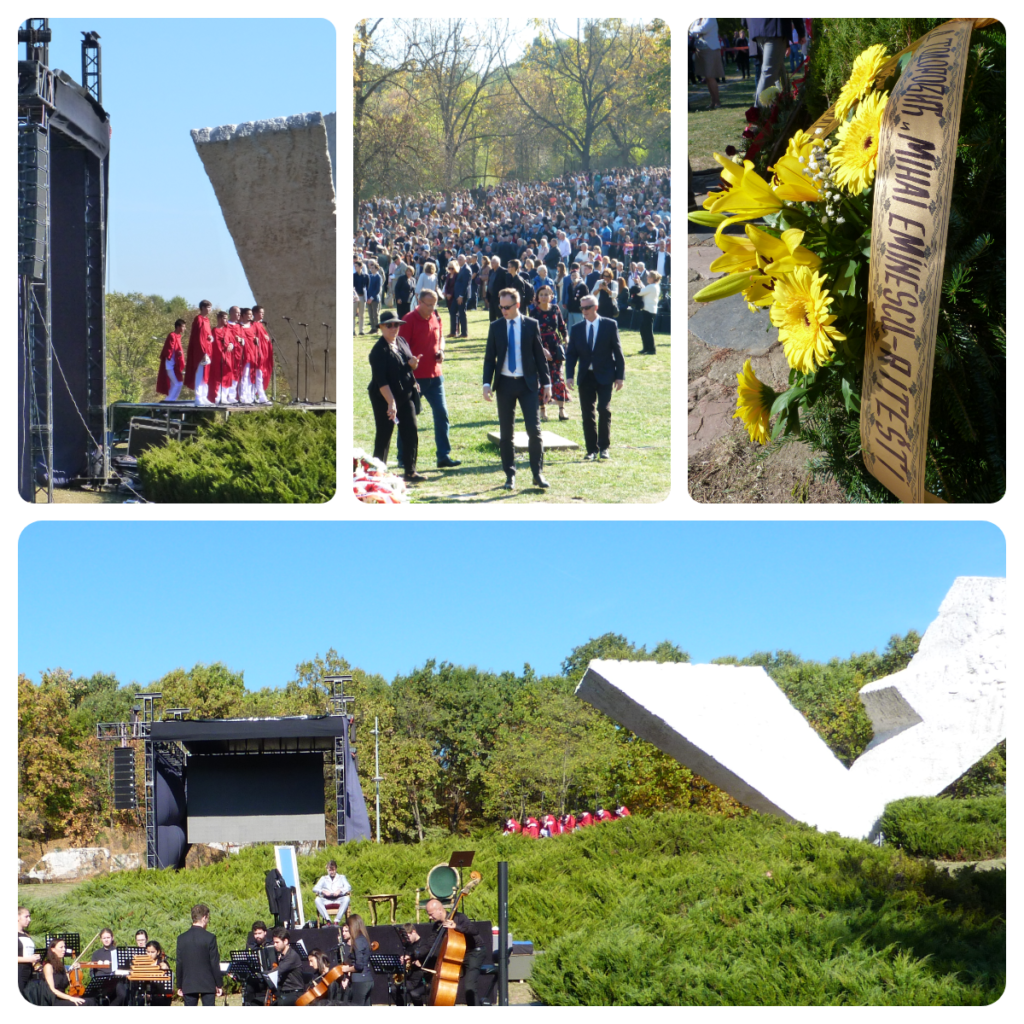
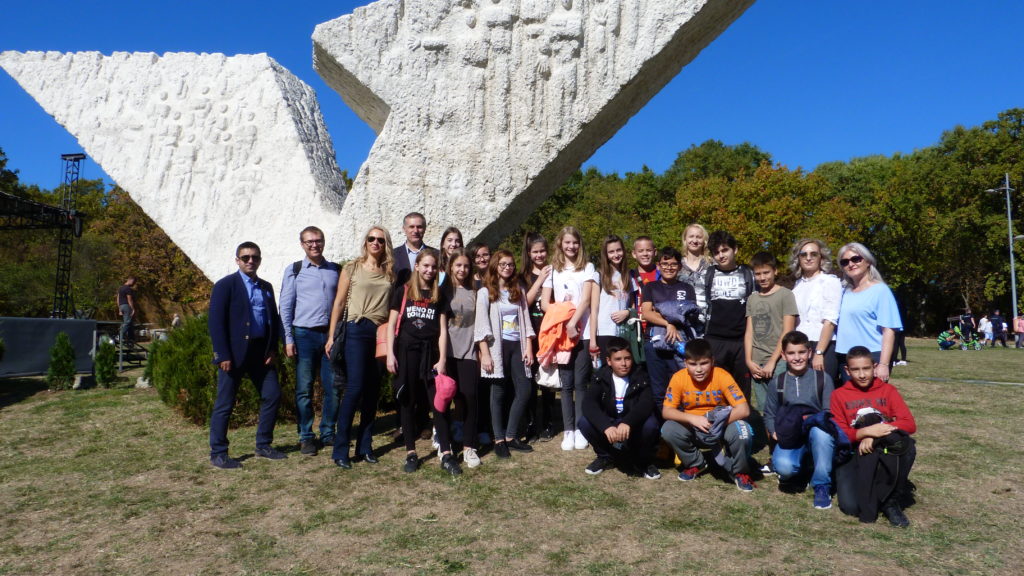
Vizităm apoi Muzeul 21 Octobrie. Cele 33 de coloane dreptunghiulare din cărămidă ale sale (cu înălțimi între 4 și 21 de metri) simbolizează numărul de gropi comune din apropiere în care au fost aruncate victimele masacrului. Pe locul construcției trecea un drum ce unea Kragujevac de o localitate vecină. Acest drum se oprește acum în dreptul muzeului, pentru a aminti, din nou, de viețile nevinovate curmate brusc în război.
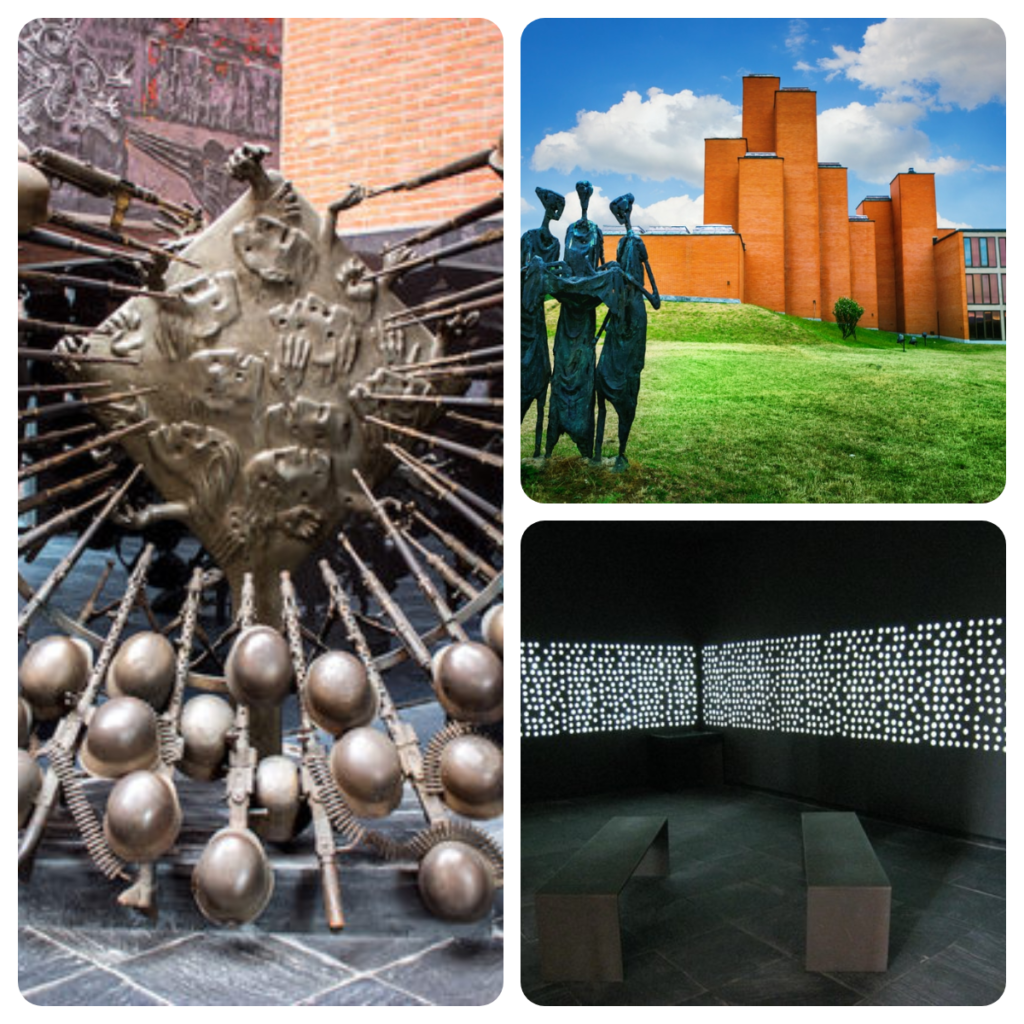
Ieșim din atmosferă schimbând primele impresii ale șederii în Kragujevac cu elevii noștri. Inocența și empatia specifice vârstei îi ajută să lege repede relații strânse, iar ospitalitatea gazdelor îi face să uite complet de dorul de casă. Misiune îndeplinită până în acest punct.
În ziua de marți, delegația noastră (elevi și profesori) participă la un schimb de experiență în Școala Milutin I Draginja Todorovic. Elevii sunt angrenați în ateliere mixte de creație, iar noi, profesorii, suntem conduși de Dragan Pavlovic, directorul școlii sârbe, la un tur al instituției pe care o conduce. Spre deliciul tuturor, dar și spre încântarea elevilor unei clase a 8-a, a avut loc chiar și un schimb educațional ad-hoc în cadrul unei ore de matematică, avându-l ca protagonist pe directorul Marian Haiducu. Pe „strada Pitești” a școlii zăbovim puțin pentru a admira expoziția lucrărilor oferite de Școala Mihai Eminescu de-a lungul anilor în cadrul schimbului educațional-cultural al proiectului.
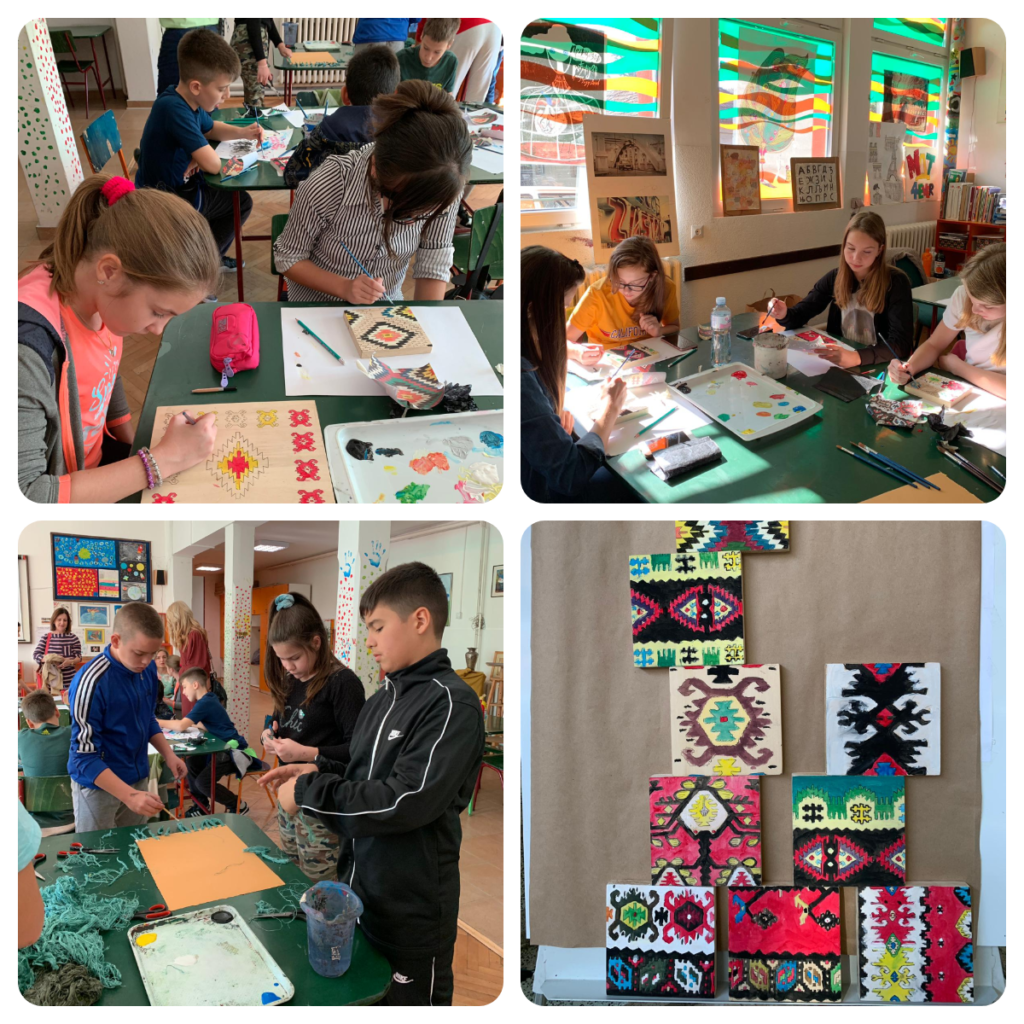
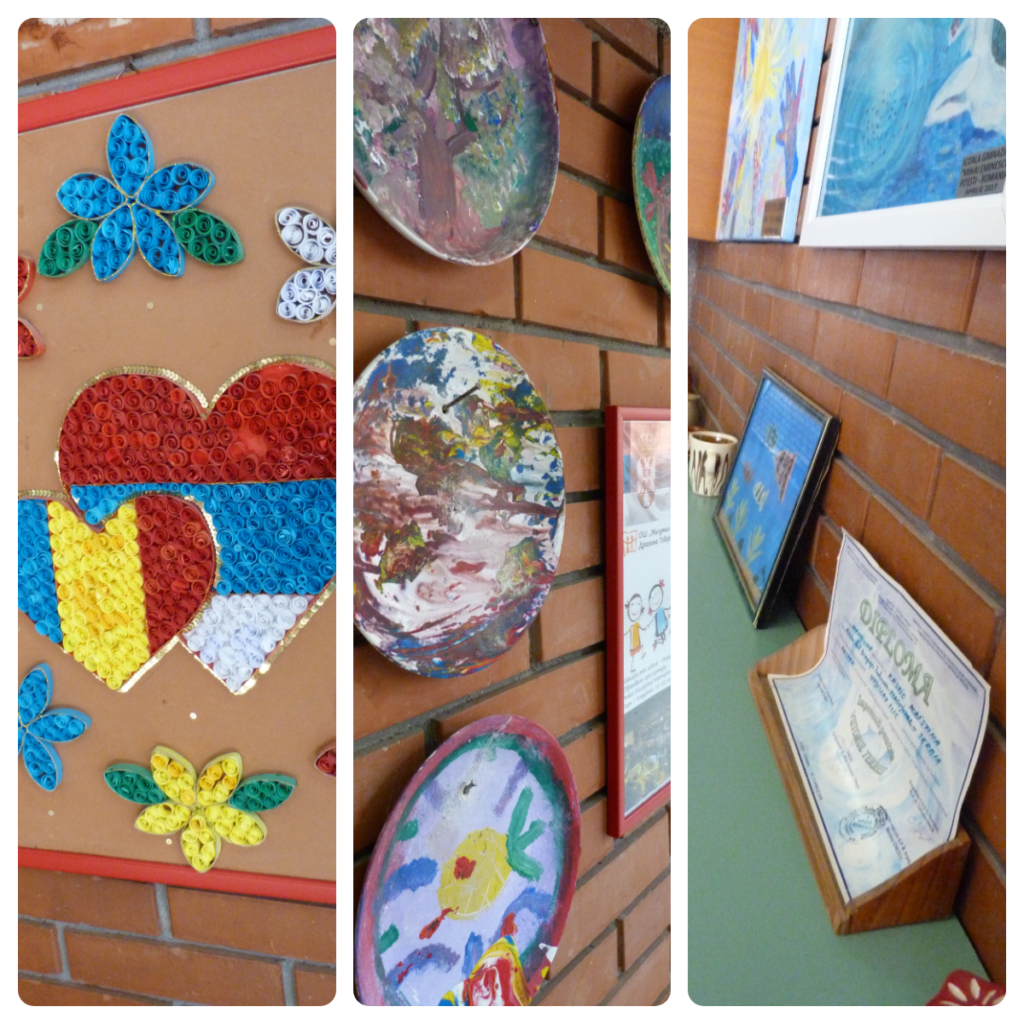
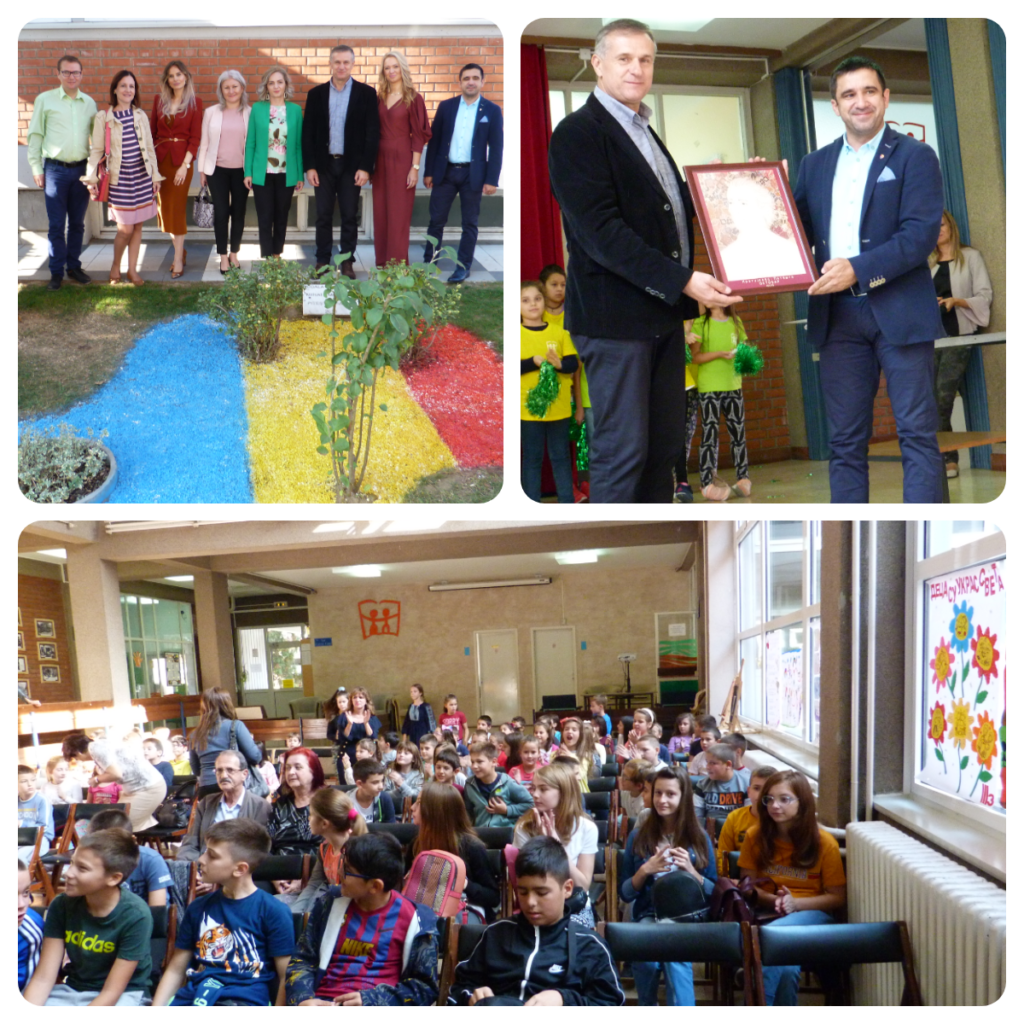
Elevii sârbi ne invită apoi la un spectacol prilejuit de sosirea noastră acolo. Printre momentele artistice inedite se numără și interpretarea unei melodii antrenante din partea elevei noastre Patricia, precum și o piesă de muzică populară românească pusă în scenă de un grup de elevi sârbi. „Mândruțo cu ochi ca mura” a răsunat din glasuri de copii sârbi în holul de festivități al Școlii Milutin I Draginja Todorovic.
Cunoașterea culturii, istoriei și civilizației sârbe continuă pentru elevi în cadrul familiilor, cu vizite la muzee, în parcuri, prin oraș, la grădina zoologică, la mall.
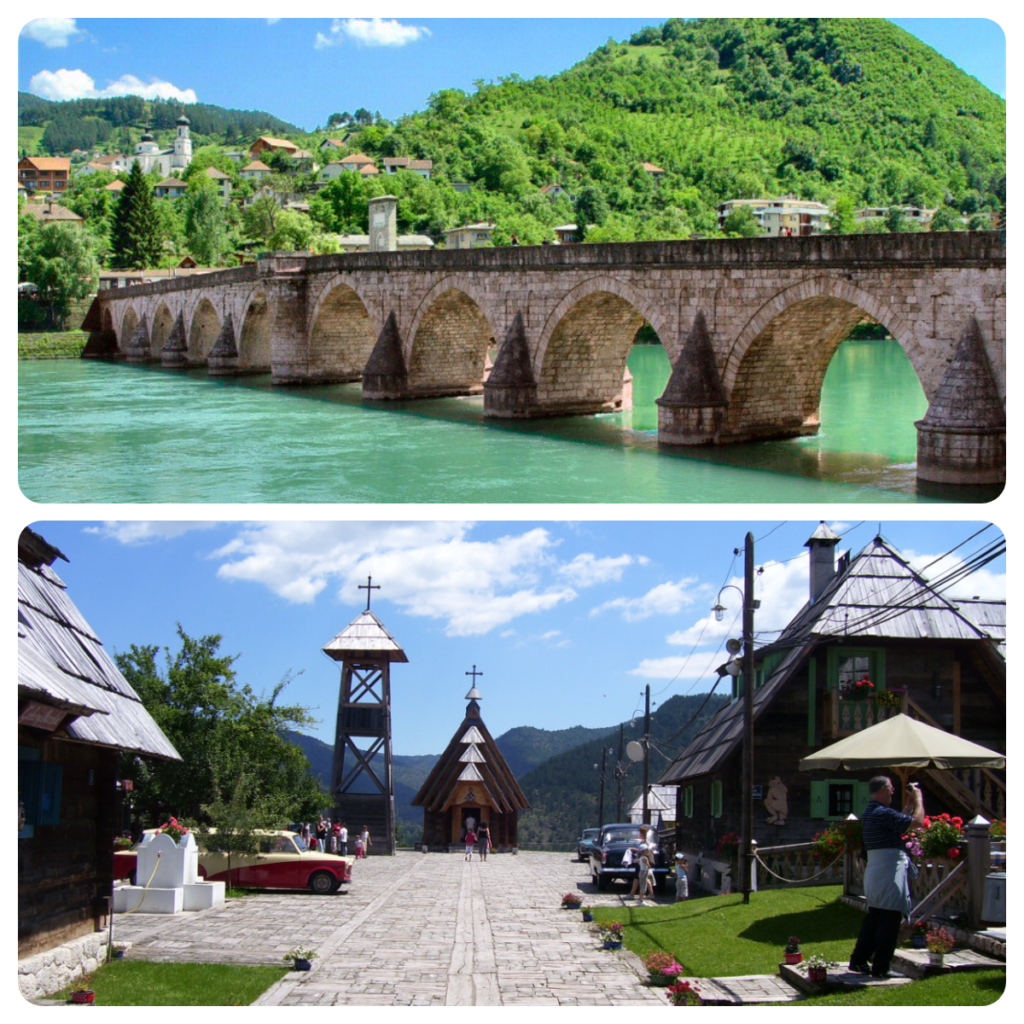
Cu același scop, directorul Școlii Milutin I Draginja Todorovic, domnul Dragan Pavlovic a pregătit delegației noastre o excursie în locuri pitorești ale Serbiei și fostei Iugoslavii:
- Stațiunea Zlatiboro;
- o întoarcere în timp prin excursia cu trenul pe calea ferată Šarganska osmica;
- pe urmele faimosului regizor Emir Kusturica în satucul tradițional Drvengrad, construit pentru turnarea filmului „Life is a Miracle”;
- Orașul Vișegrad din Bosnia cu superbul lui pod Mehmed Paša Sokolović peste râul Drina, renumit atât pentru valoarea arhitecturală și istorică, cât și datorită romanului „E un pod pe Drina” care i-a adus scriitorului iugoslav Ivo Andric premiul nobel pentru literatură.
Timpul aleargă iute când faci lucruri interesante și nici nu știm exact cum anume „ne-am trezit” joi dimineață în fața Școlii Milutin I Draginja Todorovic la poza cu „gașca” (în formula completă româno-sârbă) dinainte de întoarcerea în țară.
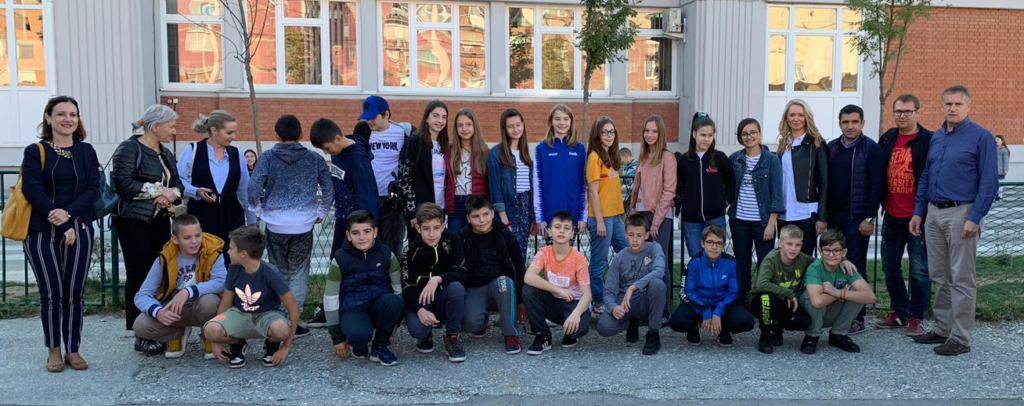
Pe drumul de întoarcere copii povestesc cu mult entuziasm experiența sârbească, vorbesc despre noii lor prieteni și încropesc deja planuri pentru vizita acestora la Pitești în primăvara lui 2020. Tristețea despărțirii și bucuria întoarcerii la părinți se contopesc în emoțiile drumului spre casă. Atmosfera de excursie e mai pregnantă acum : copiii glumesc, râd, cântă, povestesc, se joacă. În spatele nostru „se închid” Porțile de Fier, dar se deschid noi orizonturi și idei de colaborare.
„În aceste atome de spațiu și timp, cât infinit!” spunea poetul nostru nepereche. Nu poți înghesui într-un articol toate emoțiile, sentimentele și trăirile unei frumoase experiențe. Elevii vor avea cu siguranță de povestit multe colegilor lor. Din toate aceste experiențe trăite sau povestite învățăm, pas cu pas, să creăm punți trainice de legătură cultural-educațională.
Suntem convinși că proiectul internațional „Educație prin cultură – prieteni fără frontiere” va dăinui în timp, așa cum foșnetul frunzelor arămii se întoarce în fiecare toamnă pe aleile școlii noastre pentru a acompania zumzetul noilor generații de elevi ce ne vor trece pragul!
English version
October, 20th, 7:30. In Mihai Eminescu School yard the sun of a genuine Indian summer morning revives the fresh auburn leafy floor. It is Sunday morning and during the autumn weekends a symphony of autumn colours takes over the school`s front lawn in the absence of Mr Ion who, otherwise, skilfully handles the leaf blower.
The early morning calm is perturbed, at first bashfully, and then more and more strenuously, by the kids and adults voices, on the background of the staccato sound of the luggage wheels. If every little feeling had taken the shape of a colour, then, at the school`s entrance, a rainbow following a sound summer rain would have shone. Excitement, joy, bustle, curiosity, eagerness, enthusiasm, smiles are all blending in a huge range of colours among the children, parents and teachers.
It is the 14th year in a row when 10 students of our school leave for a few days to discover the traditions, culture, cuisine, education, passions, way of life of our Serbian neighbours from Kragujevac, the twinned town to Pitesti. Yet, they are not just leaving by ordinary means, but in the most authentic way possible: within the families of 10 similarly aged children, students of Milutin I Draginja Todorovic School.
As to hide their anxiety, the parents give their final pieces of advice. Since we have got a long way ahead, we get on board, not before taking a group photo with the whole gang: Marius, Ianis, Patricia, Alexandru, Andrada, Alexandra, Alesio, Ernesto, Eduard, Raluca, the teachers Cristina Langa, Luiza Zamfira (teachers for primary school), Roxana Petean (English teacher), Mihai Burdusa (Mathematics teacher), and last but not least, the principal of Mihai Eminescu School, Marian Haiducu. Four hours later we are already knocking on the Iron Gates in order to enter the Serbian territory.
The trip along the Danube offers magnificent landscapes, especially on a sunny day. Soon the mobile phones turn from game consoles into photo cameras. We have a few stops to capture the dance of the river through the rocky walls of the Cazane.
Towards evening, tired, but enthusiastic, we arrive at Milutin I Draginja Todorovic School. Well known for their hospitality (an attribute common to the two peoples), our Serbian colleagues exceed our expectations. After a few formalities our students start their Serbian experiencein a relaxed atmosphere, being taken by the families with whom they are going to spend the days to come.
The 21st of October, 1941 is one of the darkest days in the history of Serbia and Kragujevac mainly. In order to completely discourage the resistance movements during the Nazi occupation, as a result of a recent riot, the German soldiers choose this exact day to commit a massacre of such cruelty way beyond imagination. Hostages are taken and almost 3000 local people are killed in cold blood.
The monument called Interrupted Flight from Sumarice Memorial Park reminds of the fact that among those killed there were a few hundred students and their teachers. It is the place where, the day following our arrival, we take part in a commemoration emotionally charged, a national event which annually takes place in Serbia on the day of the massacre. We witness an impressive religious service, a touching, melodramatic performance, an endless laying of wreaths (including the delegations of the two schools). With no insipid politic speeches, only silent prayer, meditation and homage brought to the innocent victims.
Next we visit the 21 October Museum. Its 33 rectangular columns made of brick (between 4 and 21 m high) stand for the number of nearby communal graves in which the victims of the massacre were thrown away. On this very spot there was a road that connected Kragujevac and a neighbouring town. This road stops now right before the museum to remind again of the innocent lives suddenly disrupted during the war.
We leave this heavy atmosphere by changing a few impressions with our students about their stay in Kragujevac. The innocence and empathy specific to their age enables them to quickly bound close friendships, and the hospitality of their hosts makes them completely forget about home sick. Mission accomplished so far.
On Tuesday, our delegation, both students and teachers take part in an educational exchange in Milutin I Draginja Todorovic School. The students are engaged in mixt art workshops, whereas we, the teachers, are invited by Dragan Pavlovic, the principal of the Serbian School, to take a tour of the institution he runs. To our delight, but also to a class of 8th grade Serbian students` there was even an educational ad-hoc exchange during a Maths class with our principal Marian Haiducu in the main role. On what is called Pitesti Street in the school we stay for a while to admire the exhibition of works offered by Mihai Eminescu School along the years within this educational-cultural exchange of the project.
The Serbian Students then invite us to attend a show brought about by our arrival there. Among the original artistic moments there is one entertaining song by our student Patricia, as well as a traditional Romanian folk song performed by a group of Serbian students. Mândruţo cu ochi ca mura vibrated from the voices of the Serbian children in the festivity hall of Milutin I Draginja Todorovic School.
Knowing the Serbian culture, history and civilization continues for our students within the Serbian families, through visits to the museums, parks, the town, the Zoo, the mall.
With the same purpose in mind, the principal ofMilutin I Draginja Todorovic School, Mr Dragan Pavlovic, has prepared for the Romanian teachers a trip to scenic places of Serbia and former Yugoslavia:
- Zlatiboro resort;
- a turning back in time by the train trip on the Šarganska osmica tracks;
- on the tracks of the famous film director, Emir Kusturica, in the little traditional village of Drvengrad built for the shooting of the movie Life is a Miracle;
- Visegrad town in Bosnia with its sublime bridge Mehmed Paša Sokolović across the Drina River, famous both for his architectural and historical value, and also thanks to the novel There is a Bridge on Drina, which brought to the Yugoslavian writer Ivo Andric the Nobel prize for literature.
Time runs fast when you do interesting things and we do not exactly know how we woke ourselves up on Thursday morning in front of Milutin I Draginja Todorovic School for the group photo with the gang (full Romanian-Serbian formula) before returning to our country.
On our way back the children enthusiastically share impressions about the Serbian experience, talk about their new friends and already make plans for the latter`s visit to Pitesti in the spring of 2020.The sadness of departure and the happiness of getting back to their parents become one within the emotions of their way home. The trip atmosphere is more vivid now: the kids tell jokes, laugh, sing, tell stories, play. Behind us, The Iron Gates close, yet new horizons and ideas of collaboration open.
In these atoms of space and time, how much infinity! said our matchless poet. You cannot crowd in an article all the emotions, feelings of a beautiful experience. The students will definitely have what to tell their colleagues. From all these lived or told experiences we learn, step by step, to create everlasting bridges of cultural-educational bonds.
We are certain that the international project Inspiration for a future with no cultural barriers will last in time, just like the rustle of golden brown leaves comes back every autumn on the alleys of our school to accompany the frenzy of new generations of students that will step in our doors.
